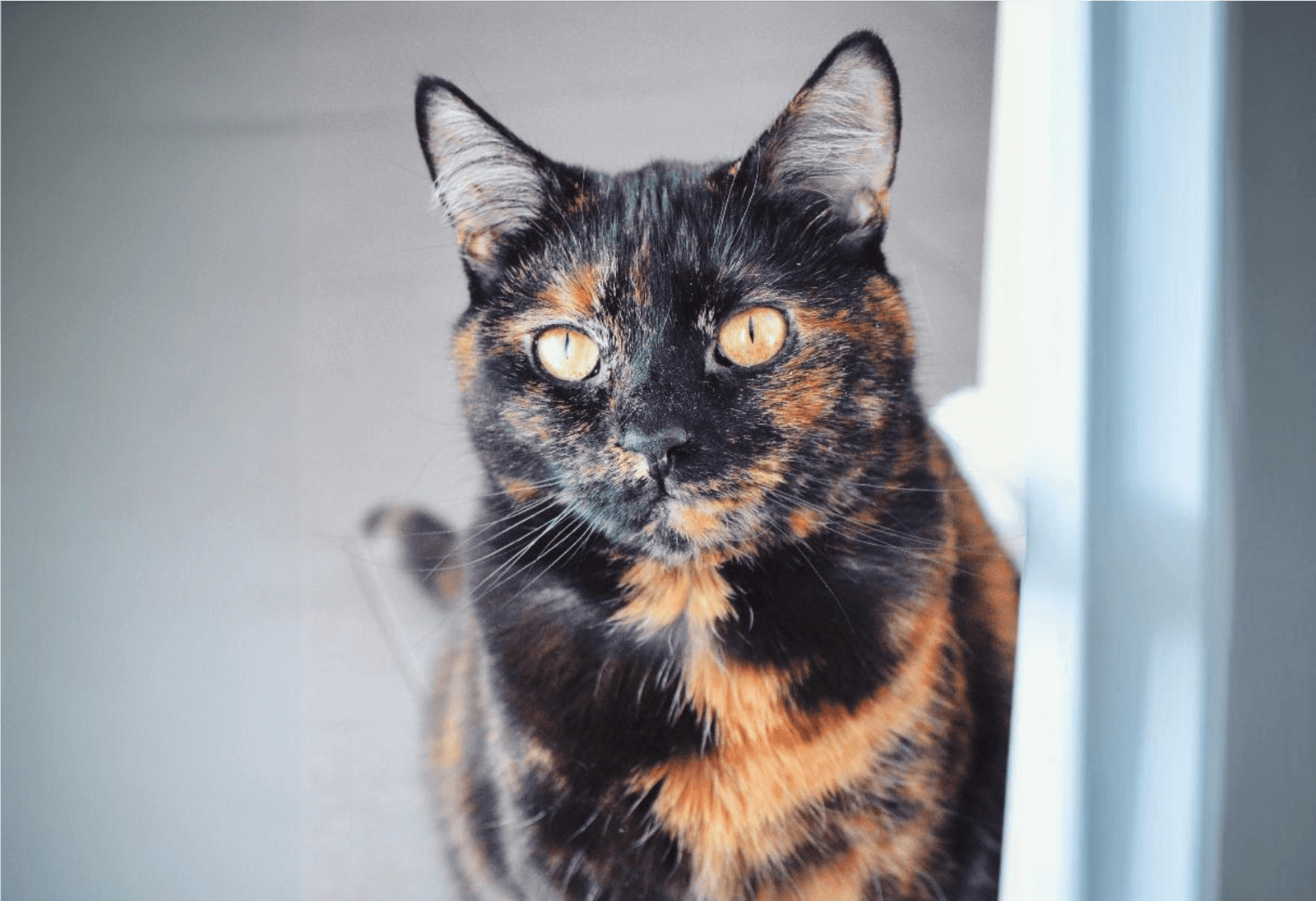Tortoiseshell Cats: Patterns, ‘Tortitude,’ and More
Introduction
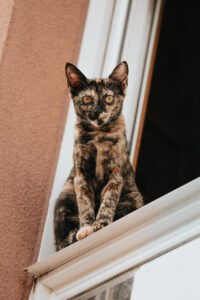
Tortoiseshell cats, or “torties,” are some of the most captivating and colorful cats in the feline world. Known for their distinctive patterns and lively personalities, tortoiseshells have become favorites among cat lovers. Unlike many other cats, torties aren’t defined by a breed but by their unique coat colors and patterns, often featuring beautiful blends of black, orange, brown, or cream. But there’s more to these cats than their looks—they’re also known for their “tortitude,” a personality trait that many tortie owners find endearing and, at times, challenging.
This guide covers everything you need to know about tortoiseshell cats. From their beautiful color patterns to their playful personalities, we’ll explore what makes them unique, why they’re adored in different cultures, and how best to care for these one-of-a-kind pets.
What is a Tortoiseshell Cat?
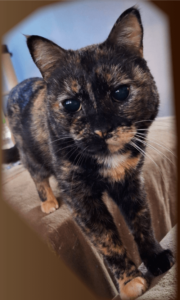
Tortoiseshell cats aren’t a specific breed but rather a type defined by their distinctive color pattern. Named for their resemblance to the mottled shells of tortoises, these cats’ coats typically feature a unique mix of orange, black, and sometimes brown or cream colors. Their coloring is the result of a fascinating genetic process that makes each tortie’s coat one-of-a-kind.
Almost all tortoiseshell cats are female. This is because their coloring is linked to the X chromosome, which determines the combination of color genes. Since female cats have two X chromosomes, they have the potential to inherit two different coat color genes, resulting in the multi-color tortoiseshell pattern. Male tortoiseshell cats are extremely rare and make up only about 1 in 3,000 torties. When they do appear, it’s typically due to an extra X chromosome (XXY), which can sometimes lead to health issues.
Tortoiseshell cats are often confused with calicos, but the two have distinct differences. While both can feature orange and black, calicos also have white patches, while tortoiseshells lack any white and have a more blended or marbled coat.
Historical Background: Tortoiseshell Cats in Myth and Culture
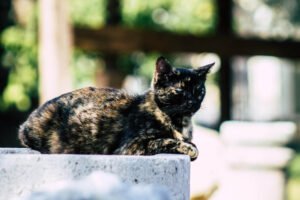
Throughout history, tortoiseshell cats have held a special place in folklore and mythology around the world. In Japan, tortoiseshells are considered “lucky cats,” thought to bring prosperity to their owners. Sailors from the 19th century would often keep tortoiseshell cats on board, believing that they’d bring good fortune and protect them from storms.
In Celtic tradition, tortoiseshell cats were considered magical, and owning one was believed to bring good luck. In Middle Eastern folklore, they were thought to be wise protectors, often associated with spiritual insight. Some legends even claim that tortoiseshells have a sixth sense, which adds to their mystical reputation. These beliefs have contributed to the tortoiseshell’s cultural popularity and made them iconic pets worldwide.
Colors and Patterns of Tortoiseshell Cats
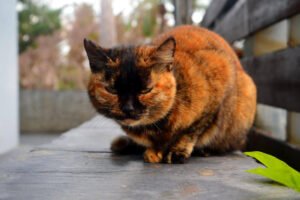
One of the most captivating features of tortoiseshell cats is their wide range of colors and patterns. Here’s a closer look at the color combinations and patterns you’ll see among tortoiseshells.
Classic Colors: Orange and Black
The most common tortoiseshells have a mix of orange and black. The orange tones can range from vibrant red to a softer cream, while the black may appear as a deep brown or dark chocolate. This combination creates a bold, eye-catching coat.
Dilute Tortoiseshells
Dilute torties have a softer color palette, where the black and orange are muted. Their coats may feature gray, cream, or even blue shades, creating a more subtle but equally beautiful look.
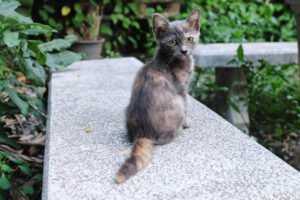
Brindled vs. Patched Patterns
Tortoiseshell patterns generally fall into two categories: brindled and patched. In brindled torties, the colors are marbled or interwoven throughout the coat, creating a mosaic effect. Patched torties, however, have distinct blocks of color, with clear areas of orange and black.
Differences from Calico and Tabby Cats
Calico cats share similar colors but have white patches, unlike tortoiseshells. Tabbies, on the other hand, have stripes or spots and lack the black-and-orange blend that defines tortoiseshells. These distinctions help tortoiseshells stand out as unique.
Each tortie’s coat pattern is unique, making them one of the most visually distinct cats in the world.
Tortoiseshell Cat Personality: Understanding “Tortitude”
Tortoiseshell cats are often known for their “tortitude”—a spirited, sassy personality that seems to be characteristic of these cats. Here are some common personality traits seen in torties:
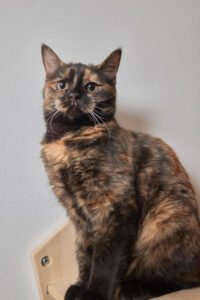
Bold and Independent
Tortoiseshells tend to be independent thinkers, often stubborn and full of confidence. They like to do things on their terms and may be less inclined to follow commands. This independence is part of their charm.
Playful and Energetic
Most tortoiseshells are lively and love playtime. Whether it’s chasing a feather toy, batting a ball, or even “stalking” their human, torties have energy to spare. Their playfulness makes them entertaining companions.
Affectionate (But Selective)
Tortoiseshells are known for forming close bonds with specific people. They may be loving lap cats for their chosen person but reserved around others. Their loyalty can create a deep bond.
Vocal and Expressive
Torties often have a range of vocal sounds, from chirps to trills and meows, and aren’t shy about expressing themselves.
While there’s no scientific proof that their genetics impact personality, tortoiseshell cats often leave a strong impression with their blend of sass and affection.
Taking Care of a Tortoiseshell Cat
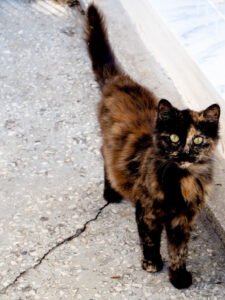
Nutrition and Diet
A balanced diet is essential for tortoiseshell cats. Look for high-quality cat food with a mix of protein and essential nutrients. Some torties can be picky eaters, so experimenting with different foods may be necessary.
Grooming Needs
Short-haired torties require minimal grooming, while long-haired tortoiseshells benefit from regular brushing to reduce shedding and prevent mats. A slicker brush like the Hertzko Self Cleaning Slicker Brush is ideal for grooming sessions and helps reduce loose hair.
Mental Stimulation and Playtime
Interactive toys like feather wands, laser pointers, and puzzle feeders are great for keeping a tortoiseshell’s active mind busy. For extra engagement, try the PetSafe SlimCat Interactive Toy and Food Dispenser, which combines feeding with play.
Creating a Comfortable Space
Tortoiseshells love cozy spaces. A cat tree, window perch, or cat bed gives them a personal spot to relax. For torties that love to climb, a multi-level cat tree like the Yaheetech Large Multi-Level Cat Tree provides exercise and comfort.
Behavioral Insights and Training Tips for Tortoiseshell Cats
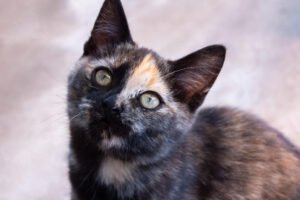
Understanding “Tortitude”
Torties can be assertive and often have strong personalities. They may be selective about who they interact with and prefer to set the rules, which is part of their unique charm.
Play Aggression and Boundaries
Some torties play rough, especially when excited. Using toys like wands keeps hands out of play, letting them satisfy hunting instincts without scratching or biting.
Training Tips
Clicker training can be effective with tortoiseshells that are food motivated. Starting with basic commands and using treats as rewards can improve communication and behavior over time.
Are Tortoiseshell Cats Right for You?
Tortoiseshells make wonderful companions for those who appreciate a lively, independent pet. Their playful personalities and loyal nature make them unique companions, though their energy and sass may require patience. If you’re looking for a cat with a strong character, a tortoiseshell could be a perfect match.
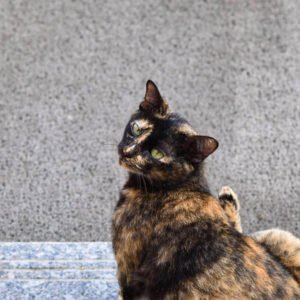
Pros and Cons
- Pros: Unique appearance, lively personality, and loyal.
- Cons: Independent, sometimes bossy, and may require regular engagement.
Conclusion
Tortoiseshell cats bring beauty, personality, and a touch of mystery to any home. Their bold coats and distinct personalities make them stand out among other cats. If you’re thinking of adopting a tortie, be ready for a unique and rewarding experience.
These unique cats offer a special bond to owners who appreciate their lively, affectionate, and occasionally sassy nature. If you’re ready for the quirks and charms of a tortie, you’ll be welcoming a friend who adds color and excitement to your life.

